| Content | Dangerous Music's MASTER brings the amazing analog sound and functionality of previous Dangerous boxes to the mastering world with a truly unique approach that will give your projects an edge over your competitors. Three insert points are front-panel switchable for integrating external analog processing and there's something special lurking behind the S&M Width knob. With the S&M button depressed, MASTER engages a "Sum or Minus" mode that controls the stereo spread and much more. Every mastering engineer that incorporates outboard gear into their rig needs a MASTER!
Powerful processing at your fingertips
There's truly nothing quite like MASTER. The S&M functionality adds a remarkable element to your mastering arsenal. Imagine being able to modify the frequency content of the program material residing in the left/right aspects of the stereo field without changing the spectrum of the center material. With MASTER, you can. Hit the S&M button, activate insert #2 with a stereo EQ connected, and you can work wonders with the sound. Say the vocals (panned center) sound fine in the mix, but you'd like to brighten the guitars and cymbals a bit (which reside in the left and right panning positions). S&M removes the center material temporarily so you can process the extreme left and right signals without coloring the center material. The S&M Width knob can also modify the width of the overall stereo field. The engineers here at Sweetwater love the flexibility of the MASTER!
A plethora of useful controls
From left to right, you've got L/R Level controls, three buttons that trigger the insertion of outboard gear in the signal path, a button that individually selects which inputs are being processed, a button that triggers Stereo or Middle Sides mode on insert 2, and a button that selects whether the Monitor Output jacks have the Input or Output signal sent to the monitor section. Next up is the Input Monitor Offset. This is very handy to match the input and output levels to listen to the effect of processing without the level difference clouding one's judgment. The engineer can also match input and output level, look down at the scale, and determine the relative gain obtained from the mastering process. This control has a scale of -2 to +8dB in 0.5 dB steps. The S&M Width was covered in depth in the previous paragraph. Lastly, the Output level control dictates the final level that passed on to the A/D convertor.


What the pros are saying about the MASTER:
- "I've never mastered a song without a Dangerous MASTER! And I can't imagine it. With the S&M feature on the MASTER, you can really fix some problems in mixes, and address balance issues... Comparing it to Mid-Side processors in the digital realm I just think it's a 'Day and Night' difference." — Colin Leonard (Mastering Engineer)
- "I'm a huge fan of the Dangerous MASTER's S&M circuitry. It always seems to add an elegant width and depth to the mix. The Dangerous gear has certainly created an advantage. Another reason we have been able to establish ourselves in a highly competitive field is that aside from the gear sounding great...our Dangerous gear has been truly steady and stable." — Emily Lazar (Mastering Engineer)
- "I can't say enough about the quality components and sonic integrity...it doesn't get much better than this. I could hear the difference between AD/DA converters...choosing between them...for each session...has become effortless. I cannot imagine working without the Dangerous MASTER." — Larry DiVivo (TapeOp Magazine)
- "Dangerous Music really got it right with the Dangerous MASTER." — Andrew Mendelson (Mix Magazine)
- "I love all the Dangerous Music equipment. I use the MONITOR ST, the MASTER, and two 2-BUS LTs for my mixing and stem-mastering." — Noël Jackson (Mastering Engineer)
- "The Dangerous MASTER immediately made a huge improvement in the quality of my work. I think it's the cleanest sounding solution available." — Dave McNair (Mastering Engineer)
Dangerous Music MASTER Features:
- Audiophile-grade components yield crystal-clear sound
- 3 insert points are front-panel switchable for integrating external analog processing
- S&M button provides you with integrated Mid-Side processing
- S&M Width knob modifies the width of your overall stereo field
- Stepped controls ensure easy repeatability
- 2 stereo inputs and 3 stereo outputs (1 for monitoring)
- Seamless connection with the Dangerous Liaison
| Heritage Audio's MCM-8 MK2 is an 8-slot 500 Series chassis with an integrated 10-channel summing mixer. The top-of-the-line MCM-8 MK2 features On Slot Technology that leverages next-generation power electronics to handle power supply on a per slot basis. Each slot has its own power supply linear regulation stages, isolating each module from the rest. Your modules simply share the metal enclosure. Each slot even has test LEDs for checking correct power operation. Dual-concentric potentiometers handle Volume and Pan for each slot, with pan pots being center detented for precise center positioning. Each channel is equipped with an On switch to assign it to the mix bus. MK2 improvements include a lower noise floor and the addition of a bypass switch for each slot that still lets you use the summing mixer functions. Heritage Audio has earned the respect of Sweetwater engineers, and the MCM-8 MK2 lives up to that sterling reputation.
Superb build and feature set
From its RAF blue-gray enclosure to the solid tactile feedback from its knobs and switches, the Heritage Audio MCM-8 MK2 unabashedly rocks vintage British Class A vibe. And just like the classic gear that inspires all Heritage Audio equipment, the MCM-8 MK2 boasts superb build quality and a very smart feature set. There's an additional stereo input on the back panel, which allows several MCM-8 MK2 units to be daisy-chained — or signals not needing further 500 Series processing to be mixed together. The central section sports analog VU meters and a Stereo Master fader. Gold-plated XLRs and DSUB25s handle the I/O.
Smart technology, superior sound
Thanks to Heritage Audio's On Slot Technology (OST), the MCM-8 MK2's power capability is a maximum of 400mA per rail, per slot — with an overall of 1.4A (1.6A non-continuous) per rail, whichever is reached first. Total available phantom power is 140mA. The mix bus has a passive voltage summing topology, similar to that found in Rupert Neve's 80 Series consoles of the 1970s. The gain loss is restored by the same Class A, 2n3055 driven, transformer-based output stage used in the Heritage Audio's modern-day version of the classic 1073. If you're not into specs, what this all means is that the MCM-8 MK2 is built right to give you many years of authoritative sonic performance and trouble-free use in your studio or on the road.
Heritage Audio MCM-8 MK2 Features:
- 8-slot 500 Series chassis with integrated 10-channel summing mixer
- NEW lower noise floor
- NEW bypass switch for each slot that leaves summing mixer functions enabled
- Mix bus with vintage Neve-style passive voltage summing topology
- Additional stereo input on the back panel allows several MCM-8s to be daisy-chained
- Central section sports analog VU meters and a Stereo Master fader
- Handles power supply on a per slots basis, isolating each module from the rest
- Gold-plated XLRs and DSUB25s handle your I/O
- 140mA total available phantom power
- Class A transformer-based output stage
- Solid build quality for many years of trouble-free use
| The Dangerous Music 2-BUS+ is a 2U, 16-channel analog summing mixer with both XLR and D-sub inputs. It raises the bar on its legendary 2-BUS predecessor with even lower crosstalk, distortion, and noise-floor performance, along with stunningly precise soundstaging and center focus. Dangerous spent over two years developing three onboard audio processors that, with a simple push of a button and twist of a knob, add tone and color to your stems or across your entire mix directly from the 2-BUS+. The 2-BUS+ is smartly designed, extremely useful, and sounds incredible.
A trio of custom audio processors
In sync with Dangerous Music's doctrine of tonal coloration as a per-project artistic choice, the 2-BUS+ features three separate custom audio processors that selectively add tone and color to your mixes. In parallel processing mode, you can deploy Harmonics, a tuned harmonic distortion generator, and Paralimit, a FET limiter on steroids. At Sweetwater, we've applied both of these across stereo mixes and on pairs of stems. X-Former kicks in a pair of custom transformers with core-saturation control on your stereo mix outs. You can have all three tone processors active concurrently, and you can flip the order of signal flow through distortion and limiting.
Outstanding flexibility
Dangerous Music knows that each engineer — and session — is unique, so they designed the 2-BUS+ for outstanding professional flexibility. They spec'd it with an XLR stereo insert before the outputs for adding a separate compressor or processing chain that you can bypass at the touch of a button for a quick reference comparison. Channels 1/2 and 9/10 can be set to mono to rout; for instance, vocals/bass and kick/snare each to its own mono input. They also gave the 2-BUS+ an output control stepped in 0.5dB increments from -4dB to +6dB, and included XLR connections for both the main and monitor outputs.
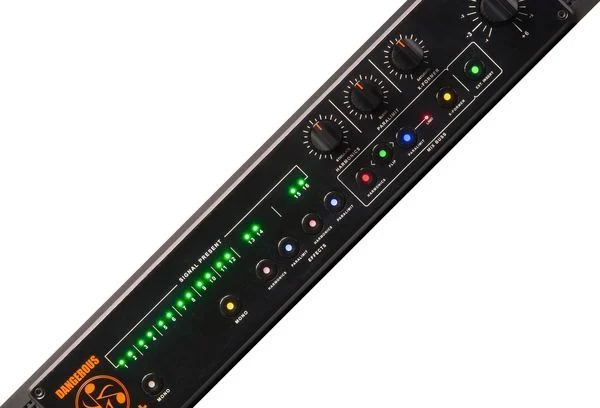
Gang 'em for high channel count
Need a full-on analog "console" summing experience? Gang together multiple 2-BUS+ units via the stereo expansion inputs XLR to create a customized channel count. For the ultimate in tonal flexibility and control, the custom audio processors on each unit apply across the ganged group output. With three units, for instance, you'll have 48 channels of analog summing, with the first two units employing Harmonics (distortion), and Paralimit (limiter) across two separate stereo stems, and the third unit applying X-Former transformer saturation on the master stereo outputs.
What the pros are saying about the 2-BUS+:
- "The Paralimit and X-Former appear to be magic knobs. Special mention goes to the Paralimit because it does that lovely thing of bringing up the general ambience without slamming the track, something I particularly love on drums. Plugged it into my system along with my old 2-BUS and Dangerous MONITOR ST, and wow ... it's fantastic! Bags of air and space around the mix." — Chris Blackwell (drummer/composer)
- "Since the 2-BUS has so much headroom, it's really easy for me to decide that I want the entire vocal submix to be brighter or warmer, or more or less compressed." — Michael James (producer/mix engineer)
- "The Dangerous Music 2-BUS is one of the reasons my studio delivers a killer sound that grants the edge on the competition." — Alberto Rizzo Schettino (engineer)
- "Between SSL, in-the-box, and 2-BUS ... in blind tests ... it was a unanimous decision that the Dangerous mixes beat out everything. The 2-BUS mixes ... were simply cleaner and warmer than the SSL or in-the-box mixing ... I just don't miss my console." — Gina Fant-Saez (mix engineer)
- "With the 2-BUS LT, elements have their own place. You end up with a quicker, bigger mix and retain a more natural, less processed sound." — Phil Greiss (producer/engineer)
- "The Dangerous Music equipment is the centerpiece of my mixing rig. Everything I do goes through a Dangerous MONITOR, 2-BUS, MASTER, and BAX EQ. Everything." — Fab Dupont (mix engineer)
- "I don't understand how the 2-BUS has been in the studio for so long, but hasn't gotten to live shows — the sound is unbelievable." — Horace Ward (FOH engineer)
- "The harmonic and transformer flavors are great options to have and the parallel limiter is a genius idea." — Chris Tabron (producer/mix engineer)
Dangerous Music 2-BUS+ Analog Summing Mixer Features:
- Stunning 16-channel analog summing mixer injects your mixes with exceptional headroom and dimensionality
- 3 analog options (Harmonics, Paralimit, and X-Former) for adding tonal coloration to your mix
- XLR and D-sub input connectivity and flexible routing allow for a customized workflow
- Integrate your outboard gear easily with the switchable stereo analog insert
- Output control is stepped in 0.5dB increments for perfect recallability
- High-quality components ensure audiophile-grade sound
| The Ultimate Desktop Mixer Legendary SSL studio tools redefined and streamlined
To the casual observer SiX looks like any other compact desktop mixer. Look a little closer and like all SSL consoles, SiX reveals a carefully considered feature set that is driven by an obsessive desire for total flexibility, to encompass every creative eventuality. It may be small but SiX is a classic SSL design. It carries the DNA of 40 years of true expertise in creative studio workflow. Listen to SiX and you will experience the impeccable sonic performance that is the hallmark of every SSL console. It is powerful and intuitive. Inspired and rewarding.
SiX is a condensed professional console for use in the studio, in post-production, on stage, and for podcasting. SiX offers big console sound and an impressive set of utility features in a format that is small enough to stick in a bag a go wherever you need it. SiX is stunning value; it offers two recording channels with SuperAnalogueTM mic pres, two band EQ, an essential one knob version of the classic SSL Channel Compressor, a new two-band Channel EQ, inserts and 100mm faders. There is a two-knob version of the legendary G-Series Bus Compressor on the main mix bus and the unique Listen Mic Compressor on the Talkback. In mixdown mode it is a very capable twelve channel summing system that offers analogue detail, depth and width to your mixes.
The SuperAnalogue™ Sound of SSL
SiX is an SSL SuperAnalogue™ design – it gives you the sonic signature of a large format SSL console on your desktop or in your backpack. Its signal path is fully balanced from front to back on everything except the headphone output. It delivers pristine, detailed audio with wide dynamic range, ultra-low noise, ultra-low distortion and superb imaging. If you want to know more about the technical reasons why SSL mixers sound so good read our document.
Two Recording Channels
SiX has two mono channels with SSL SuperAnalogue™ Mic’ Pre’s; these are transparent, fast and have a much wider available gain range than you would typically get on a compact desktop mixer – 66dB of gain compared to the more typical mid-40s or 50dB found in desktop mixers. They have phantom power, 75Hz high pass filter and an independent line-level input which can be switched to instrument level input with high impedance.
Moving down the channel strip we have a brand-new one knob compressor circuit. This design is based on and has the same sound as the classic SSL feed-forward Channel Compressor circuit. It has a program-dependent attack time, a fixed release time and fixed ratio. Simply adjust the threshold, watch the traffic lights flash to see how much compression is happening and rely on the circuit to automatically adjust gain to match input levels. This is a cool-sounding circuit that makes it simple to dial in a consistent level and get signals sitting right in the sweet spot.
Both mono channels have a new two-band SSL EQ that may be independently switched between shelf and bell curves, with different centre frequencies for each type. This approach draws upon the SSL design legacy of specifying response curves and centre frequencies for channel EQ that are immediately intuitively pleasing in their response; these curves and frequencies were selected by our team as the most “musically useful” for a wide range of sources.
SiX has 100mm faders. We spent some time working on alternate fader tapers and settled on a law that gave us the most control over the most useable gain range, making on-stage level control far easier than it would be with a rotary or a 60mm fader as found on other compact mixers.
Each channel has a fully balanced insert point for integrating other signal processors which is after the EQ and Compressor circuits, and like all SSLs the insert send is always active – meaning you can use this as a “dry” record send to your DAW if required.
At the bottom of the mono channels we have an ALTernate input switch which can source 2 extra mono channels from a connector on the rear of the console which can be used at mixdown.
Line Level Heaven
SiX has two stereo input channels with -10/+20 dB trim for line sources such as synthesisers, drum machines, output from soundcards etc. These have their own balance controls and 100mm faders. If only the Left input of a stereo channel is connected (and the right left free) the channel will automatically switch to mono, panned centre.
While SiX might be small it can handle a lot of inputs at mix-down! Using the two mono input and the two stereo input channels gives SiX its name, but we also have two stereo EXTernal inputs (with volume controls in the master section) which can be sent to the mix bus. Include the ALT inputs and we have up to 12 channels that can be summed into the main mix bus.
Master Bus Magic
SiX has a G Series Bus Compressor on the main mix bus. This uses the same circuit design as the legendary SSL Bus Compressor from our larger consoles but with a fixed ratio, attack, and release settings and a more modern quad-VCA chip. The simplified controls make it very easy to get that SSL glue and snap on whatever you push through your master bus. SiX also has a set of inserts on the main mix bus that can be used to bring external processing tools (like SSL Fusion) to your mixdown.
Routing Pro
SiX has a collection of professional routing & monitoring features taken directly from our large format console heritage. It has two Stereo Cue buses (with level and pan controls) for individual artist foldback mixes. The Master Section has main and alternate monitor outputs with a proper monitor source matrix, as well as mono check, dim and cut. The fader channels all have proper PFL and a Mute button that routes the muted signal to a ‘Bus B’. Bus B can be used as a convenient DAW record send but it can also be routed to the monitor matrix. This means that the muted signal can be monitored without it feeding the main mix bus and then switched in to the main mix with the Mute button – perfect for live webcasting because a remote feed can be monitored ‘offline’ and punched in to the broadcast feed. There is a talkback mic’ input with phantom power and SSL’s unique, crunchy Listen Mic Compressor, which of course also serves as a unique processing tool that delivers that classic 1980’s slammed drums sound.
Key Features:
A fully professional condensed console for use in the studio, in post-production, on stage, and for podcasting.
Benchmark SuperAnalogue™ audio performance
Ultra low noise : ultra-low distortion : pristine sound
Stunning Record Path
Two SSL console grade SuperAnalogue mic pre’s
Classic SSL Channel Processing
Essential versions of SSL Channel EQ and Dynamics
The unique Listen Mic Compressor
Nothing slams drums quite like it!
Professional Routing & Monitoring
The hidden versatility of truly professional features
12 Input Summing at Mixdown
12 line level inputs with channel and Master Bus inserts
Legendary Master Bus Compressor
An essential version of the incredible SSL legacy
Completely balanced signal path
Everything except the headphone jack is fully balanced | Brand New Midas ProX with Neutron.
In person demos are available. Shipping cost is the buyers responsibility and will be determined by buyers location. Please message to discuss shipping. If purchased without a shipping agreement in place, the buyer will be responsible for local pickup.
The Midas PRO Series family moves up a gear with the PRO X control centre and the industry-changing NEUTRON Audio System Engine. Featuring 168 simultaneous input channels and 99 time-aligned and phase-coherent mix buses, the PRO X sets a new performance benchmark in high-profile live sound applications and is a truly impressive digital control surface for the engineer whose very livelihood depends on both unparalleled functionality and reliability. Like all PRO Series consoles, the PRO X features managed latency and 40 bit floating point processing precision.
HyperMAC and AES50 audio networking technologies allow the PRO X to dynamically assign up to 288 inputs and 294 outputs at 96 kHz sampling rate to any of its input channels and bus outputs on a scene-by-scene basis. This high level of connectivity, coupled with the large channel and bus counts, makes the PRO X equally at home in theatres and symphony halls as it is in live concert touring, outside broadcast and music festivals. | SSL Six Mixer
The SSL Six Mixer is a condensed professional console for use in the studio, in post-production, on stage, and for podcasting, SiX offers big console sound and an impressive set of utility features in a format that is small enough to stick in a bag. SiX is stunning value; it offers two recording channels with SuperAnalogueTM mic pres, an essential one knob version of the classic SSL Channel Compressor, a new two-band Channel EQ, inserts and 100mm faders.
There is a two-knob version of the legendary G-Series Bus Compressor on the main mix bus and the unique Listen Mic Compressor on the Talkback. In mixdown mode it is a very capable twelve channel summing system that offers analogue detail, depth and width to your mixes. The Six Mixer carries the DNA of 40 years of true expertise in creative studio workflow. Listen to SiX and you will experience the impeccable sonic performance that is the hallmark of every SSL console. It is powerful, intuitive, inspired and rewarding.
SSL Six Mixer Features
- Benchmark SuperAnalogueTM audio performance
- Stunning Recording Path
- Classic SSL Channel Processing
- The unique Listen Mic Compressor
- Professional routing & Monitoring
- 12 Input summing at Mixdown
- Legendary Master Bus Compressor
- Completely balanced signal path
- Auto switching Power supply (100 - 240V)
|










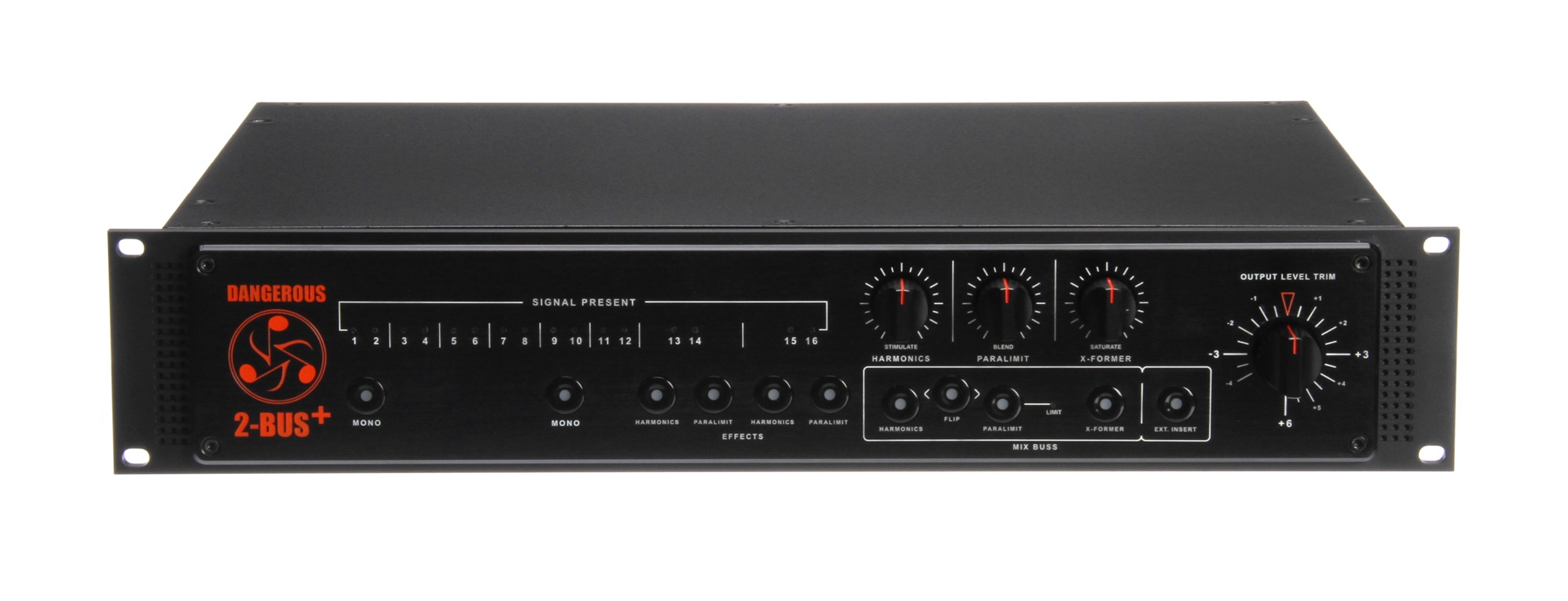



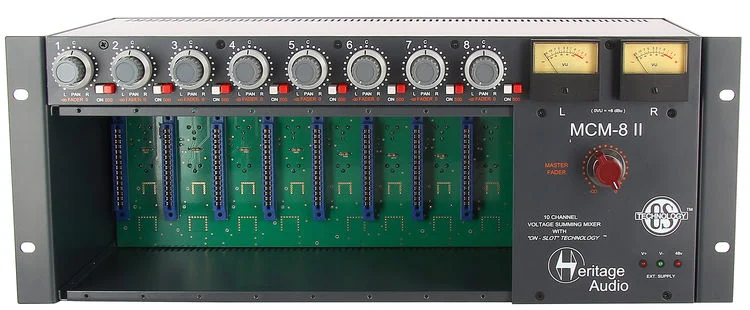

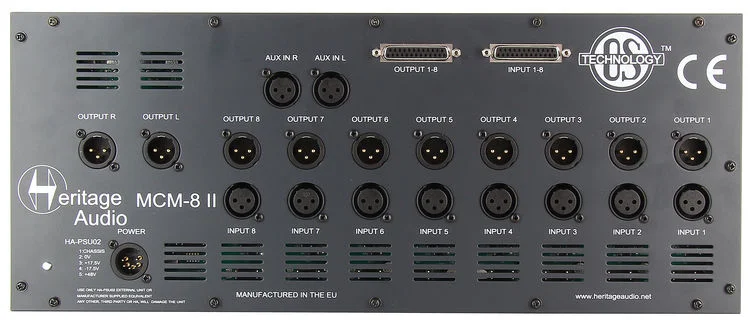


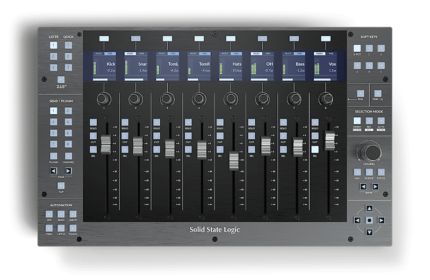







Reviews
There are no reviews yet.